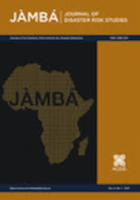
Jamba-Journal of Disaster Risk Studies
Scope & Guideline
Transforming Insights into Actionable Strategies.
Introduction
Aims and Scopes
- Disaster Risk Reduction and Management:
The journal emphasizes research on strategies and frameworks for effective disaster risk reduction, focusing on community involvement and institutional collaboration. - Resilience and Vulnerability Assessment:
A core area of focus is the assessment of community resilience and vulnerability to disasters, particularly in the context of climate change and socio-economic factors. - Policy and Governance in Disaster Management:
The journal explores the role of policies and governance structures in disaster risk management, emphasizing the need for coherent and inclusive frameworks. - Community-Based Approaches:
Research highlighting the importance of local knowledge, cultural practices, and community engagement in disaster preparedness and response is a significant aspect of the journal. - Climate Change and Environmental Risks:
The journal addresses the intersections of climate change impacts and disaster risks, focusing on adaptive strategies and sustainable practices.
Trending and Emerging
- Community Engagement and Local Leadership:
Papers increasingly highlight the role of local actors and community involvement in disaster risk reduction, indicating a shift towards participatory approaches that empower communities. - Impact of COVID-19 on Disaster Preparedness:
The COVID-19 pandemic has emerged as a significant theme, with research exploring its effects on disaster preparedness, community resilience, and the intersection of health and disaster management. - Adaptive Capacity and Resilience Building:
There is a growing emphasis on adaptive capacity as a critical component of resilience, with studies focusing on how communities can enhance their ability to cope with and recover from disasters. - Integration of Technology in Disaster Management:
Emerging research explores the use of technology, including social media and geospatial tools, for improving disaster communication, awareness, and management strategies. - Interdisciplinary Approaches to Disaster Risks:
The journal is increasingly featuring interdisciplinary research that combines insights from social sciences, environmental studies, and health sciences to address complex disaster risk scenarios.
Declining or Waning
- Traditional Disaster Response Models:
There is a noticeable reduction in papers focusing solely on traditional disaster response models, as the field shifts towards more integrated and holistic approaches that consider community resilience and adaptive capacity. - Single-Dimensional Risk Assessments:
Research that solely examines single dimensions of risk (such as solely environmental or social factors) has decreased, indicating a growing recognition of the need for multi-hazard and interdisciplinary assessments. - Generalized Climate Change Discussions:
While climate change remains a critical theme, discussions that do not connect climate impacts to specific disaster risk scenarios or community responses have become less frequent. - Urban Disaster Management Practices:
The focus on urban disaster management practices appears to be declining, potentially due to an increasing emphasis on rural and community-based approaches, as well as the recognition of informal settlements' unique challenges.
Similar Journals
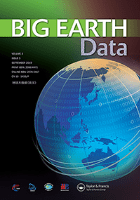
Big Earth Data
Advancing the Frontiers of Earth Science and TechnologyBig Earth Data is a prestigious open-access journal that has been at the forefront of advancing research in the intersection of earth science and computer technology since its inception in 2017. Published by TAYLOR & FRANCIS LTD in the United Kingdom, this journal is dedicated to disseminating groundbreaking findings and innovative methodologies in the fields of Earth and Planetary Sciences and Computer Science Applications. With a commendable impact factor and an impressive positioning in the Scopus rankings—claiming Q1 status in Computers in Earth Sciences and Q2 in Computer Science Applications—it serves as a vital resource for researchers, professionals, and students alike. The journal encourages submissions that explore the integration of big data technologies in managing, analyzing, and visualizing earth-related data, thereby fostering interdisciplinary collaboration. Since embracing its open-access model, Big Earth Data has enhanced the accessibility of high-quality research, promoting a broader dialogue in the scientific community and contributing to informed decision-making in global environmental challenges.

GIM International-The Worldwide Magazine for Geomatics
Exploring Innovations in GeomaticsGIM International - The Worldwide Magazine for Geomatics, published by REED BUSINESS-GEO, is a pivotal resource for professionals and researchers working within the Geomatics field. With an ISSN of 1566-9076, this journal has ceased its coverage in Scopus since 2018, yet it continues to be a valuable platform for knowledge exchange within the geomatics community. Although the journal does not currently offer an Open Access option, its articles provide critical insights into environmental science, engineering, and earth sciences as established through its ranks in Scopus, including a placement of #184/210 in Environmental Science and a startling 11th percentile in General Engineering. The magazine's content aims to inspire advancements in technology and methodology, serving as an important conduit for the dissemination of research and emerging trends in the geomatics sector. GIM International, based in the picturesque village of Lemmer in the Netherlands, remains a respected publication that equips its readers with knowledge essential for navigating the complexities of our transforming world.
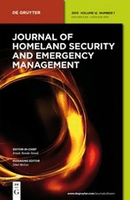
Journal of Homeland Security and Emergency Management
Transforming Knowledge into Action for Emergency PreparednessJournal of Homeland Security and Emergency Management, published by Walter de Gruyter GmbH in Germany, is a leading platform for scholarly research dedicated to the critical fields of security and emergency management. With an impressive impact factor reflecting its high-quality publications, this journal plays an essential role in advancing knowledge within its scope that covers vital issues such as disaster preparedness, risk assessment, and organizational resilience. The journal's Scopus rankings highlight its distinguished standing, being in the top quartile for Safety Research and demonstrating significant impact across various fields including Business Management and Safety, Risk, Reliability, and Quality. Researchers, professionals, and students alike can access a wealth of information as this open-access journal from 2004 to 2024 is committed to disseminating critical insights and innovative practices essential for effective homeland security and emergency management strategies.
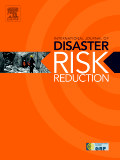
International Journal of Disaster Risk Reduction
Shaping best practices in disaster preparedness and governance.The International Journal of Disaster Risk Reduction is a leading academic publication dedicated to advancing the understanding and management of disaster risks, promoting innovative solutions and effective strategies for risk reduction. Published by ELSEVIER, this journal serves as a critical platform for researchers, professionals, and students in the fields of Geology, Geotechnical Engineering, and Safety Research. With an impressive impact factor and ranked in the top quartile (Q1) across its various categories as of 2023, it demonstrates exceptional quality and relevance in its contributions to science and engineering disciplines. The journal has been committed to disseminating high-quality research since its inception in 2012 and remains open for new submissions through 2024. The Scopus rankings reflect its prestigious position, with notable placements in Earth and Planetary Sciences and Social Sciences, highlighting its influence in shaping best practices for disaster risk governance. As an essential resource for anyone involved in disaster preparedness and mitigation, the International Journal of Disaster Risk Reduction fosters knowledge exchange and collaboration among stakeholders in the global community.

Buildings
Transforming Ideas into Structures: Your Gateway to Building ExcellenceBuildings is a premier peer-reviewed journal published by MDPI, focusing on the multidisciplinary aspects of architectural and civil engineering. Established in 2011, this Open Access journal has quickly gained recognition in the academic community and is currently classified in the Q1 category for Architecture and Q2 for Building and Construction, as well as Civil and Structural Engineering, reflecting its significant impact within these fields. With Scopus rankings placing it in the top tier of architecture and construction disciplines, Buildings provides a platform for innovative research and practical applications that push the boundaries of knowledge in building design, sustainability, and infrastructure development. The journal, based in Switzerland and intended for an international audience, welcomes various types of content including research articles, reviews, and case studies, ensuring a comprehensive resource for researchers, professionals, and students alike.
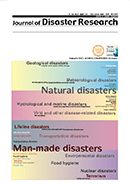
Journal of Disaster Research
Exploring the nexus of engineering and safety for effective disaster response.Journal of Disaster Research, published by FUJI TECHNOLOGY PRESS LTD, is a prominent Open Access journal that has been disseminating critical research on disaster management since its inception in 2007. Focusing on the interrelated fields of engineering and safety, the journal aims to advance knowledge and policy in disaster risk reduction, response, and resilience, making it an essential resource for researchers, practitioners, and policymakers alike. With an ISSN of 1881-2473 and E-ISSN 1883-8030, the journal covers a wide range of topics related to disaster studies, ensuring the dissemination of innovative solutions and diverse perspectives. Situated in Japan, the journal has been ranked Q3 in both Engineering (Miscellaneous) and Safety, Risk, Reliability, and Quality categories, showcasing its commitment to quality scholarship. As it converges its research contributions from 2006 to 2024, the Journal of Disaster Research continues to serve as a vital platform for advancing the science and practice of disaster research, thereby enhancing societal resilience against crises.

Journal of Safety Science and Resilience
Pioneering research at the intersection of safety and resilience.Welcome to the Journal of Safety Science and Resilience, a pioneering platform dedicated to advancing knowledge in the fields of safety, risk, reliability, and quality. Published by KEAI PUBLISHING LTD and based in China, this Open Access journal has made significant strides since its inception in 2020. With an impressive impact factor and a distinguished Q1 ranking in various categories, including Safety Research and Safety, Risk, Reliability and Quality, it serves as an authoritative resource for researchers, professionals, and students alike. The journal's commitment to disseminating high-quality research is reflected in its exceptional Scopus rankings, with top positions in decision sciences and social sciences. As we converge into the future with volumes planned up to 2024, engaging contributions focused on contemporary challenges and innovations in safety science are more essential than ever. Explore groundbreaking studies and elevate your understanding of resilience in the face of uncertainty through this invaluable academic resource.
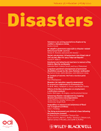
DISASTERS
Shaping the future of disaster studies with high-impact scholarship.DISASTERS, published by WILEY, is a premier academic journal dedicated to advancing the understanding of disasters across multiple disciplines, including Earth and Planetary Sciences and Social Sciences. With a historical publication span from 1977 to 2024, this journal has established itself as a vital resource within the academic community, boasting a Q1 category ranking in both fields, indicating its high impact and relevance. DISASTERS ranks impressively in Scopus, holding the #27 position in General Social Sciences and #36 in General Earth and Planetary Sciences, reflecting its influence in shaping disaster research and policy. The journal serves as a platform for interdisciplinary collaboration, offering researchers, professionals, and students critical insights into disaster management, response strategies, and risk reduction measures. Although it is not an Open Access journal, DISASTERS remains a cornerstone for those looking to contribute to and stay informed about the evolving landscape of disaster studies.

Australian Journal of Emergency Management
Driving innovation in crisis response strategies.The Australian Journal of Emergency Management, published by the Australian Emergency Management Institute, is a pivotal resource in the field of emergency management, public health, and safety research. With a history dating back to 1998 and a convergence period extending to 2024, this journal actively contributes to advancing knowledge and practice in emergency medical services and related areas. Holding strong positions in both the Q2 and Q3 quartiles of 2023 rankings, it stands out within its categories, particularly in Health Professions and Safety Research. While it is not an open-access journal, it provides essential insights and empirical research that are invaluable for researchers, professionals, and students alike. Located in East Melbourne, Australia, the journal ensures that critical advancements in emergency management and health are highly accessible to its global audience, fulfilling its mission to promote informed decision-making and improve community resilience during crises.

International Journal of Emergency Management
Transforming knowledge into action for emergency management excellence.International Journal of Emergency Management is a reputable publication within the fields of emergency medicine and strategic management, published by InderScience Enterprises Ltd. With its ISSN 1471-4825 and E-ISSN 1741-5071, this journal has been a crucial platform for scholarly research since its inception in 2003. The journal aims to disseminate high-quality, peer-reviewed articles that address critical issues related to emergency management, including but not limited to disaster preparedness, response strategies, recovery methods, and risk assessment. Despite being categorized in Q4 of both emergency medicine and strategy and management in 2023, the journal serves as an essential resource for researchers, professionals, and students looking to further explore the evolving dynamics of emergency management. It leverages its global presence, with its headquarters located in the United Kingdom, thus attracting a diverse array of contributions addressing international and interdisciplinary perspectives. The journal fosters an environment where innovative ideas can flourish, ultimately contributing towards enhancing global emergency management practices.